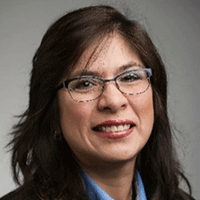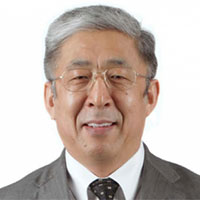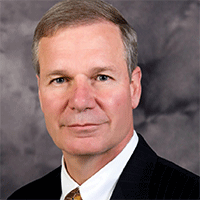Tuesday, July 11 | 8:00AM - 9:00AM

Judith C. Vidal, Ph.D.
Distinguished Member of Research Staff
Manager of Building Energy Science Group
Leader of Buildings Emerging Technologies Program
Buildings Technologies and Science Center
National Renewable Energy Laboratory (NREL)
Keynote Title: Energy Storage for Sustainable Buildings
Abstract: Alongside expansion in intermittent renewable power generation, electrification of building end uses like heating, water-heating, and cooking can transition residential and commercial buildings to net-zero CO2 emissions. Widespread electrification, however, has the potential to increase annual heating electricity use by over 250% and will also be a major driver of peak period electricity demand growth, particularly in colder regions. Cost-effectively decarbonizing the electricity and building sectors in parallel will require the ability to shift electricity demand to match variable and intermittent renewable generation as well as to satisfy distribution constraints. Behind-the-meter storage (BTMS) in buildings for both thermal energy storage (TES) and battery or electrical energy store (EES) can significantly increase a building’s ability to manage and shift electricity demand and is a key enabler of a net-zero CO2 energy system in the United States. NREL and other National Laboratory partners such as LBNL and ORNL are co-leading an energy storage consortium for buildings—Stor4Build—that will focus on developing and advancing integrated/packaged and stand-alone/modular energy storage systems that will accelerate the growth, optimization, deployment, and adoption of simplified and novel technologies that can be easily adopted by all Americans. Stor4Build’s 5-year outcome is a community-scale demonstration of technologies to showcase the initial achievements of the consortium, which will serve to lay a foundation for large-scale deployments of TES along with EES and systems capable of satisfying both the heating and cooling needs in buildings and thus validate the transition toward needed market transformation.
Biography: Dr. Judith Vidal from the National Renewable Energy Laboratory (NREL) is the Manager of Building Thermal Energy Science Group, the Sub-Program Lead of Buildings Emerging Technologies, and a Distinguished Member of Research Staff. Dr. Vidal is also a joint faculty member at the Colorado School of Mines (CSM). She has established an international reputation for her cutting-edge work on thermal systems and has published many journal articles on her work in journals such as Nature Materials Degradation. Dr. Vidal has received prestigious awards such as the NREL Distinguished Member of Research Staff in February 2021 and the NREL Chairman's Award in 2017.
In the area of thermal systems, optimization of thermal materials, thermomechanical evaluations of wrought alloys, their weldments, and advanced manufacturing, Dr. Vidal is currently leading several R&D efforts evaluating systems to extend the lifetime thermal components. Dr. Vidal has diversified her expertise and capabilities in other technologies such as building emerging technologies, water splitting electrolysis, fuel cells, thermoelectric, and biofuels. Her collaborative efforts, domestically and internationally, cover several technologies and leverage the R&D activities for early-stage research to create efficient and interactive buildings to help decrease energy consumption.
Donald Q. Kern Award Lecture
Wednesday, July 12 | 8:00am – 9:00am

Hongbin Ma
Chair, Curators' Distinguished Professor, & Glen A. Barton Professor
Director, Multiphysics Energy Research Center (MERC)
Mechanical & Aerospace Engineering
University of Missouri
Columbia MO
Lecture Title: Oscillating Heat Pipe and Its Extra-High Heat Transport Capability
Abstract: Heat transfer process in an oscillating heat pipe (OHP) involves liquid-vapor interfacial phenomenon, surface forces, thermally excited mechanical vibration, evaporation and condensation heat transfer, oscillated forced convection, and heat conduction. The most outstanding feature is that an OHP can effectively integrate the state-of-the-art of heat transfer processes such as thin film evaporation, oscillating flow, thermally-excited mechanical vibration, nanoparticles, high heat transfer coefficient of entrance region, turbulent flow and vortexes induced by the oscillating flow of liquid plugs and vapor bubbles. Therefore, the OHP can achieve an extra high effective thermal conductivity. OHP has been tremendous advances in the past 20 years. This presentation introduces recent results of OHPs in the field including theoretical models of oscillating motion and heat transfer of single phase in capillary channels, mathematical modeling of mechanical vibration OHP system, exciting forces, operating limitation, heat transfer mechanisms enhancing oscillating motions and heat transfer of two-phase flows, neutron imaging study of oscillating motions, and nanofluid’s effect on the heat transfer performance in OHPs. The importance of thermally-excited oscillating motion combined with phase change heat transfer to the extra-high heat transport capability in OHPs is emphasized.
Biography: Dr. Hongbin Ma is Chair, Curators' Distinguished Professor, & Glen A. Barton Professor, in the Department of Mechanical & Aerospace Engineering, and the director of the Multiphysics Energy Research Center (MERC) in the College of Engineering at the University of Missouri (MU). He received his Ph.D. in 1995 from Texas A&M University. Since he joined MU in 1999, he has conducted active research in the fields of phase-change heat transfer, heat pipes, ejector refrigeration, and thermal management. His research has been supported by NSF, ONR, NIH, Intel, Dell, Foxconn, DARPA, Northrop Grumman, and many other federal agencies and private companies. His research work has resulted in more than 320 publications including 1 book, 8 book chapters, and over 180 refereed journal papers as well as 23 patentable technologies. The contributions he made are not only in scientific fundamental research but also in engineering applications. His research efforts led to the establishment of ThermAvant Technologies, where he is co-founder and president, have made ThermAvant become the world’s leader in the OHP thermal control technology, the sole company providing the OHP thermal control technology to the top defense companies in the U.S. and a winner of the 2018 100 R&D Award. His earlier heat pipe research on capillary flow, thin film evaporation, and micro/nanostructures had resulted in the low-cost highly efficient heat pipe heat sinks. ISoTherM (Innovative Solution of Thermal Management) consortium, where he was the founding director, was supported by Intel to develop innovative cooling technologies for laptop and desktop computers, which have contributed to the advancement of heat pipe applications in computer cooling. He is a Fellow of American Society of Mechanical Engineering (ASME) and a Fellow of National Academy of Inventor (NAI).
The Max Jakob Award Lecture
Monday, July 10 | 8:00 AM – 9:00 AM

G. P. Peterson
President Emeritus and Regents Professor
Woodruff School of Mechanical Engineering
Georgia Institute of Technology
Atlanta Georgia Institute of Technology
Atlanta, GA
Lecture Title: The Application of Phase Change Materials for the Thermal Control of Hypersonic Vehicles
Abstract: The technological challenges associated with the development of next generation commercial Low Earth Orbit (LEO) and Department of Defense (DOD) hypersonic vehicles, are substantial. Friction between the vehicle and the surrounding environment results in aero-thermodynamic heating and generates extremely high heat fluxes and thermally induced stresses, all in a high-g, potentially corrosive environment. The extremely high heat fluxes at the vehicle leading edges may result in temperatures in the range of 3,000 C on the vehicle surface and dictates the need for new, robust thermal management solutions capable of operating at Mach 13-16 and altitudes of 50 to 55 km at local gravitational loads of 3 to 5 g’s, while still retaining the structural integrity required in the complex geometry of these hypersonic vehicles. The combination of recent advancements in refractory-additive manufacturing technology, when coupled with phase change materials, presents an opportunity for the development of novel integrated thermal management systems capable of operating at these extreme conditions.
Presented here is an overview of several of the approaches that utilize phase change technology and advanced materials and fabrication techniques, to address these and other related issues to develop systems that are capable of transporting the very high heat fluxes occurring at the leading edges of the vehicles to other areas where the heat can be dissipated. A brief summary of the operational requirements and historical development of these systems, along with the current state-of-the art and challenges presented in these applications is presented and discussed.
Biography: G. P. "Bud" Peterson is president emeritus and Regents Professor at the Georgia Institute of Technology. Peterson's research interests have focused on the fundamental aspects of phase-change heat transfer, including the heat transfer in reduced-gravity environments, boiling from enhanced surfaces, and some of the earliest work in the area of flow and phase-change heat transfer in micro/nanochannels. Previous investigations have focused on applications involving the thermal control of manned and unmanned spacecraft and progressed through applications of phase-change heat transfer in the thermal control of electronic components and devices. His current research includes the use of phase-change heat transfer for arresting epileptic seizures, fundamental applications of phase-change heat transfer to the cooling of the leading edges of hypersonic vehicles, and heat dissipation from personal and wearable technologies. He earned a BS in Mechanical Engineering, a second BS in Mathematics, and a MS in Engineering, all from Kansas State University and a Ph.D. in Mechanical Engineering from Texas A&M University. He is the author or co-author of 17 books or book chapters, 255 refereed journal articles, and 145 conference publications, and holds 19 patents, with three others pending.